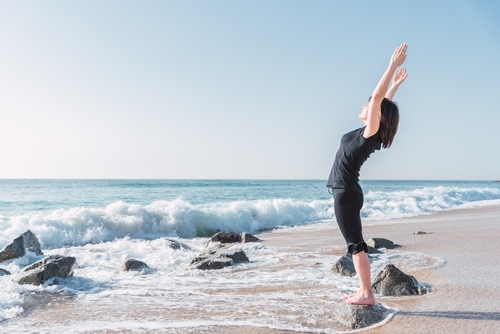Moving Like Water
There’s a kind of peace that comes from moving slowly, deliberately—like watching mist lift off a lake at sunrise. That’s what it felt like the first time I practiced Qigong in a quiet, shaded garden. My arms moved through the air as if parting clouds. My feet pressed gently into the earth. Breath and motion flowed as one.
Unlike the vigorous pace of modern life—or even some yoga styles—Tai Chi and Qigong invite a different kind of strength. They’re not about pushing. They’re about yielding. Listening. Reconnecting. These ancient practices teach us how to move through the world with more grace, rooted in awareness and softness.
Ad Banner #1
Placeholder for the first advertisement.
Ancient Practices for the Modern Nervous System
Both Tai Chi and Qigong come from the rich lineage of Traditional Chinese Medicine and martial arts. While they differ slightly in form and application, both share the same goal: to harmonize the flow of qi, or life energy, throughout the body.
Tai Chi is often described as “meditation in motion.” Its flowing sequences build balance, coordination, and inner calm. Qigong (pronounced “chee-gong”) tends to be more repetitive and focused on cultivating energy through breath, visualization, and simple movements.
These practices are particularly soothing to the nervous system. Unlike high-intensity workouts that stimulate adrenaline, Tai Chi and Qigong encourage parasympathetic activation—rest, digestion, and recovery. This makes them profoundly helpful for stress relief, emotional regulation, and overall wellness.
The Mind-Body Benefits Are Gentle but Deep
Balance & Grounding
Tai Chi strengthens the lower body and improves proprioception—the body’s sense of where it is in space. As we age, this balance becomes vital, not just physically, but energetically. Standing tall, rooted through the feet, teaches us emotional stability as well.
Breath Awareness & Energy Flow
Breath is central in Qigong, guiding each movement and acting as a vehicle for qi. Conscious breathing softens tension and brings clarity to the mind. Over time, you begin to feel energy moving—not metaphorically, but literally—as warmth, tingling, spaciousness.
Mental Clarity & Emotional Calm
Because both practices require attention to posture, breath, and flow, the mind has less room to wander. This presence can be meditative and deeply healing, especially for those who find seated meditation difficult. When the body leads, the mind often follows into stillness.
Beginning Your Practice: A Gentle Way In
You don’t need a background in martial arts. You don’t even need to be flexible. Just a willingness to move slowly and with awareness. Here are a few approachable ways to begin:
1. Start With Standing Still
Begin by simply standing. Feet hip-width apart, knees soft, arms relaxed by your sides. Breathe into your belly. Feel your feet root into the ground. This posture—called Wuji—is the foundation of all movement. Even five minutes of standing like this, breathing with awareness, can be grounding.
2. Practice “Holding the Ball”
This common Qigong shape involves holding your arms in a circular position in front of the body, as if cradling a large sphere. Feel the subtle energy between your palms. Breathe. Shift your weight slightly side to side. This is balance in action.
3. Flow Through a Simple Sequence
Tai Chi sequences can be long and complex, but many teachers offer short forms for beginners. One beautiful and accessible movement is “Parting the Wild Horse’s Mane,” which mimics a wave flowing through the arms as you step forward. Let your breath lead. Let your movement follow.
4. Combine Movement with Visualization
Qigong often includes imagining energy flowing through the body—down the spine, out through the fingers, into the earth. This isn’t make-believe. Visualization enhances neural and energetic pathways. As you move your arms, imagine clearing tension, inviting light, or drawing in strength.
Ad Banner #2
Placeholder for the second advertisement.
Practicing with Kindness and Intuition
Tai Chi and Qigong teach you to listen—not just to instructors, but to your body. If a movement feels forced, simplify it. If you lose your balance, smile and return. This is not about mastery. It’s about relationship.
These practices are also emotionally intelligent. If grief is present, let the movement hold it. If joy rises, let it ripple through your arms. Every practice becomes a container for your experience, allowing energy to move where it’s been stagnant.
And because these movements are so gentle, they are accessible even on days when your body feels heavy or tender. In fact, those are often the days when the practice works its deepest magic.
When to Seek Guidance
While you can begin at home, finding a teacher—online or in person—can help you deepen your experience. A good teacher will guide you not just in form, but in feeling. And if you live with chronic illness, injury, or mobility limitations, always adapt the practice to support your body. Many movements can be done seated or with minimal strain.
These arts were never meant to be exclusive. They were designed to bring healing and strength to any body, at any stage.
A Moving Meditation for Everyday Life
As you continue the practice, you’ll begin to notice its influence beyond the mat or garden. The way you walk becomes softer. The way you breathe becomes steadier. The way you respond to life becomes less reactive, more rooted.
Movement becomes a meditation. Stillness finds its way into motion. And through this harmony, you return to yourself—not as a task, but as a rhythm.
An Invitation to Move
Today, try this: find a quiet space. Stand tall. Breathe into your feet. Let your arms rise slowly with your inhale, and lower with your exhale. Feel the weight of your body, the space around you.
That’s enough. That’s the beginning.
Tai Chi and Qigong don’t ask for perfection. They ask for presence. Let movement become your anchor, and mindfulness your guide.



























